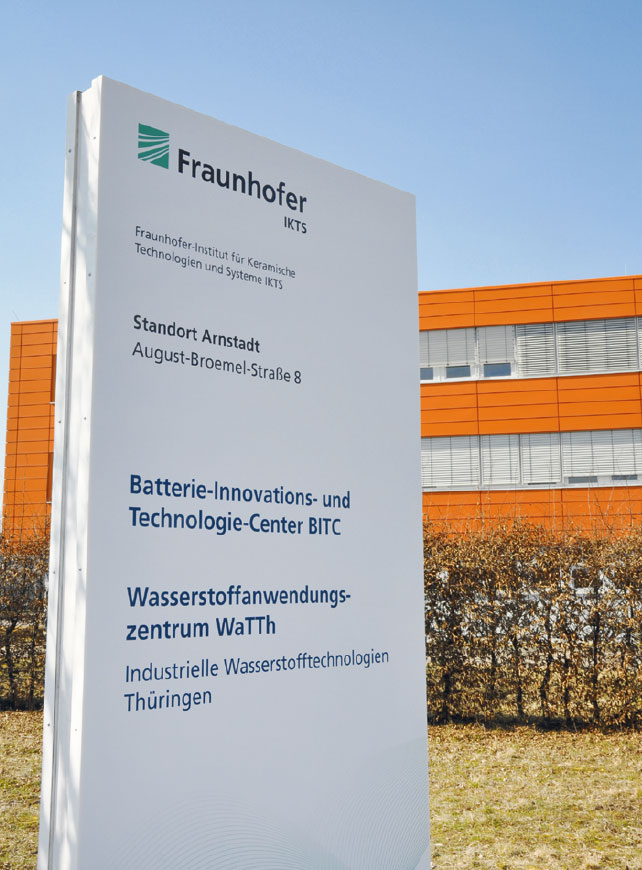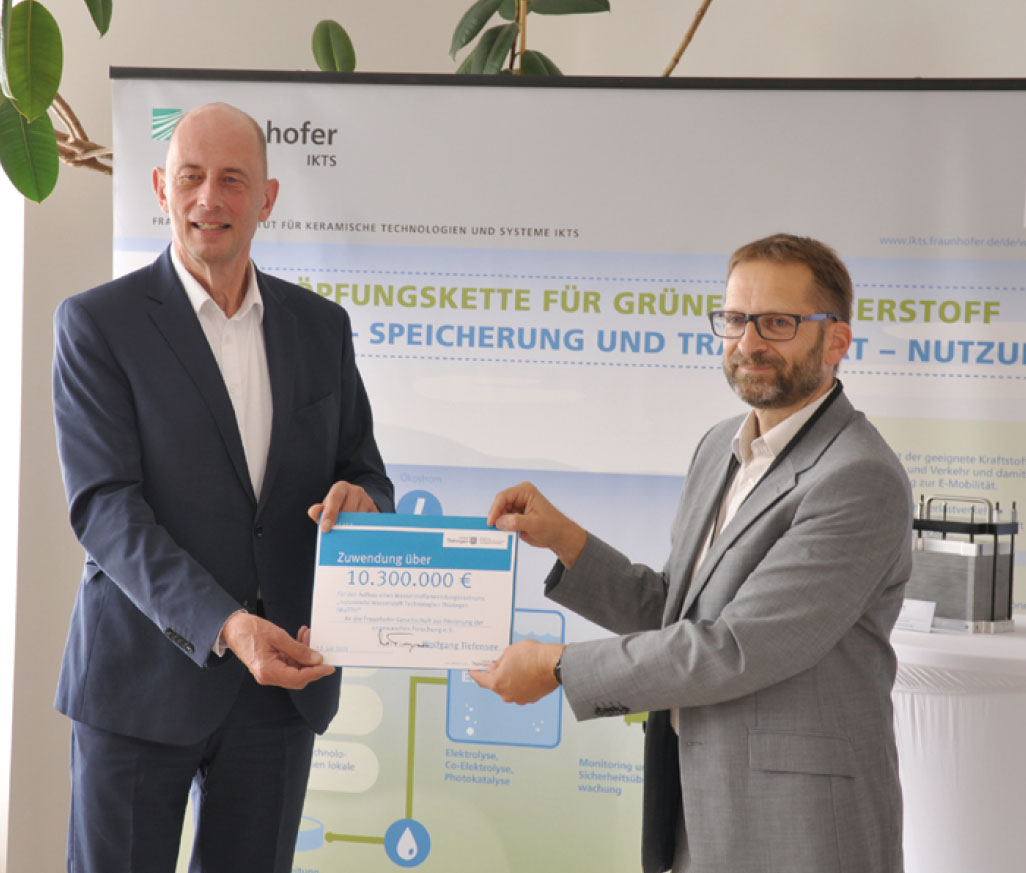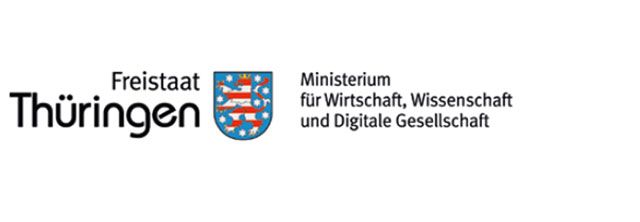
Industrial Hydrogen Technologies Thuringia WaTTh at the Arnstadt site



As a versatile energy carrier, hydrogen will play a key role in decarbonizing our world. In parallel with the worldwide expansion of hydrogen infrastructure, the economic scaling of hydrogen technologies is becoming more and more essential. In order to be able to cover the future nation-wide demand for green hydrogen and to make it directly available to industrial end users, electrolysis systems needs to be significantly further developed.
Fraunhofer IKTS operates the Hydrogen Application Center WaTTh at its Arnstadt site to achieve just that. The focus is not only on automated stack assembly and smart machine and production design but also on logistics and data acquisition, framed as industrial data concepts. The WaTTh’s cooperation with the BITC, which is already located in Arnstadt and focuses on ceramics and battery production research
(Industry 4.0), produces synergistic effects. In an effort to upscale electrolysis technology, the goal is to develop all subcomponents of hydrogen technology into the 10 to 100 kilowatt class. We are focusing on high-temperature electrolysis with solid oxide cells (SOE) as well as alkaline electrolysis (AEL).
Since producing highly scaled stacks is not feasible in a laboratory environment, WaTTh provides the corresponding production and quality testing procedures as well as test fields on a pilot-plant scale. IKTS thus contributes to the timely achievement of industrial maturity and large-scale stack production.
To expand the capabilities of WaTTh, a power-to-X plant with customized high-temperature electrolysis cells will also be installed. This plant will demonstrate how co-electrolysis from CO2 and water produces sustainable, CO2-neutral raw materials and fuels, in a fully automated process.
Another major contribution that hydrogen can make to decarbonizing industry lies in its use for generating heat in industrial furnaces. According to the current state of the art, these furnaces use natural gas, oil or electrical energy. In order to make hydrogen-fired furnaces more attractive as a field of activity for cooperation partners in regional industries, in particular the ceramics industry and industrial furnace construction, and to demonstrate and explore the resulting possibilities, the plan is to construct and operate a modular hydrogen-fired sintering furnace with corresponding furnace peripherals. As a demonstrator in modular design, different variants of H2 heat generation will be tested, analyzed and verified, and established firing processes will be adapted for this type of heat generation.
In order to ensure sufficient space for the set-up and activities, an adjacent vacant lot (13,000 m2) has been acquired.
We thank the Thuringian Ministry of Economy, Science and Digital Society for its financial support.
Supported by
